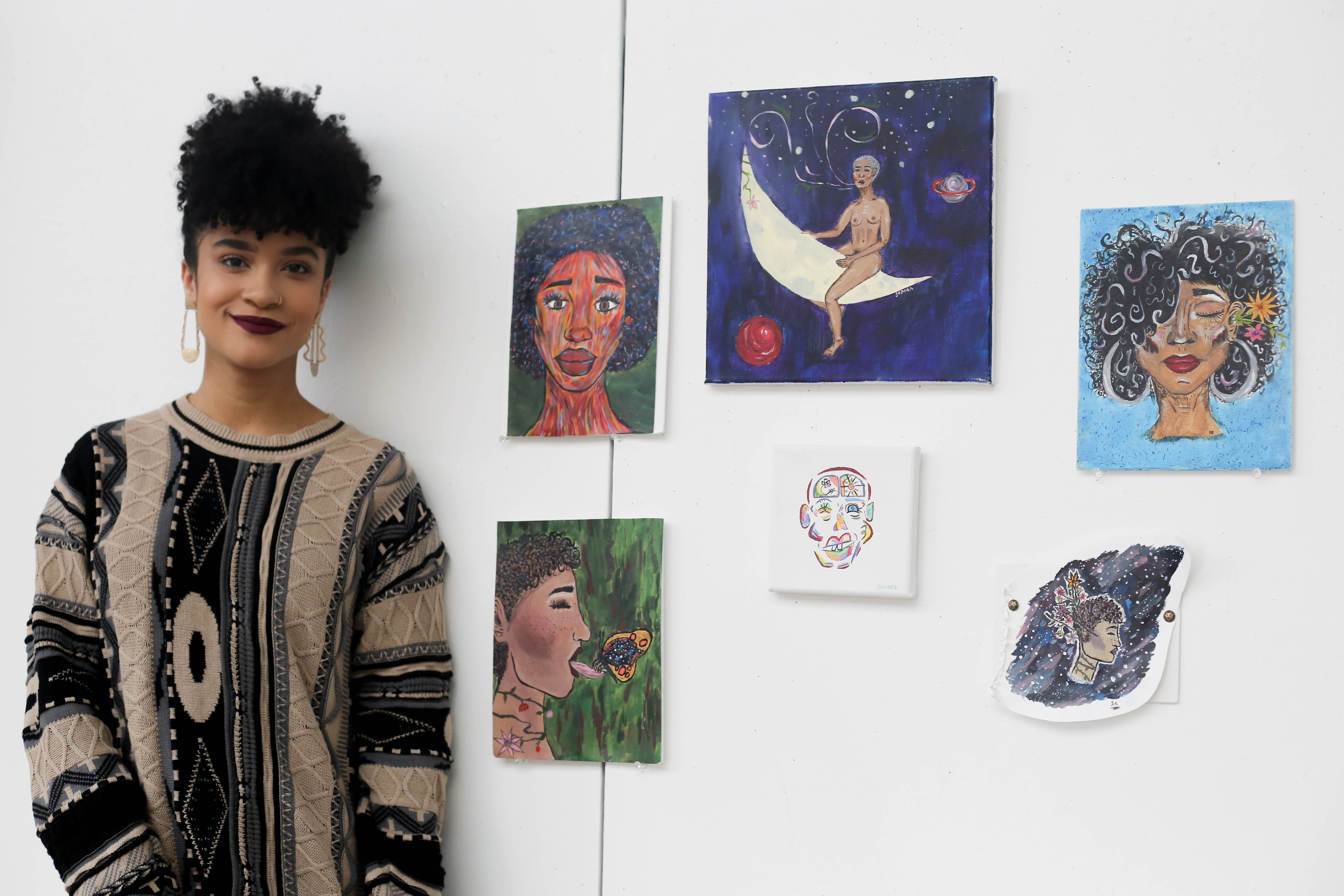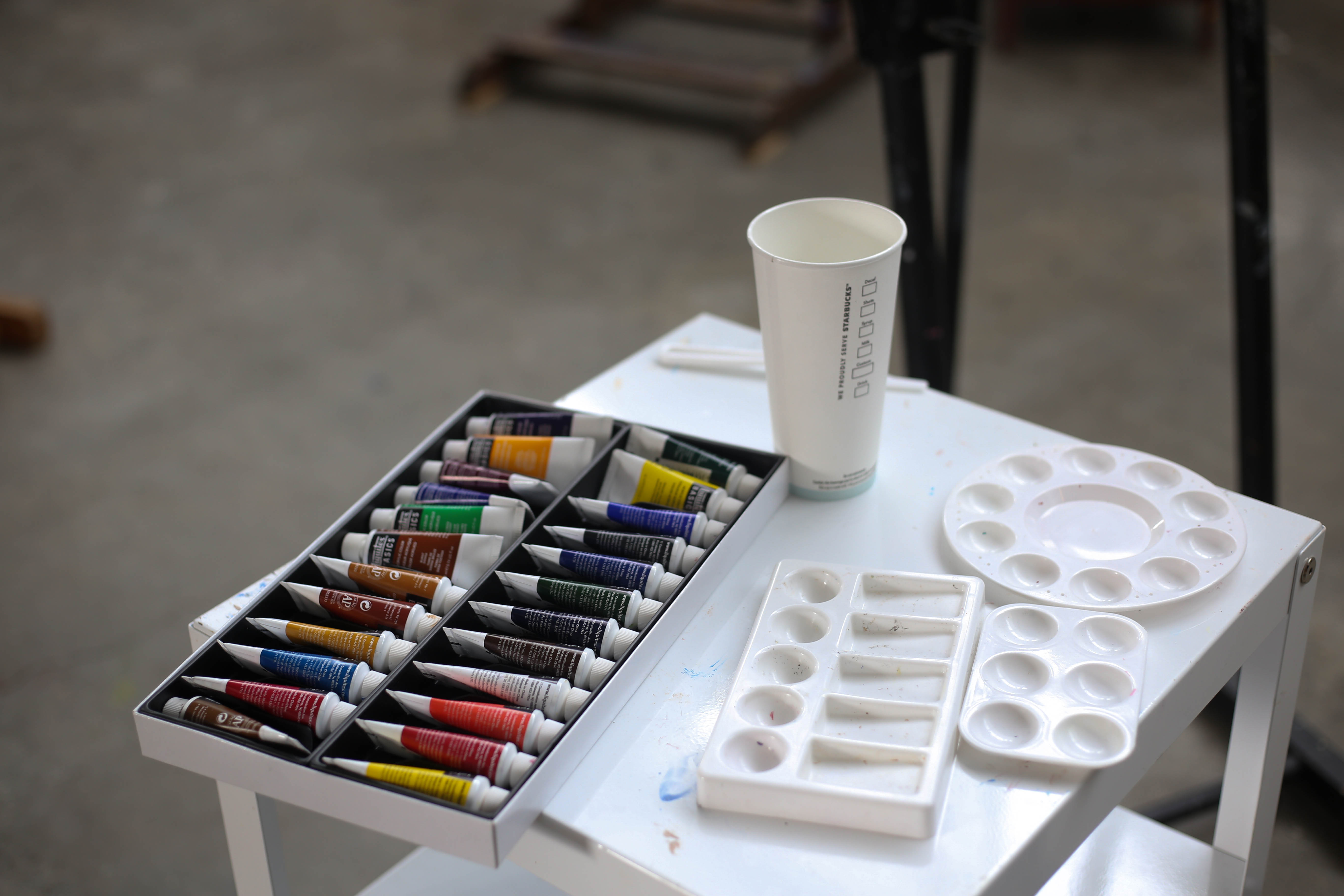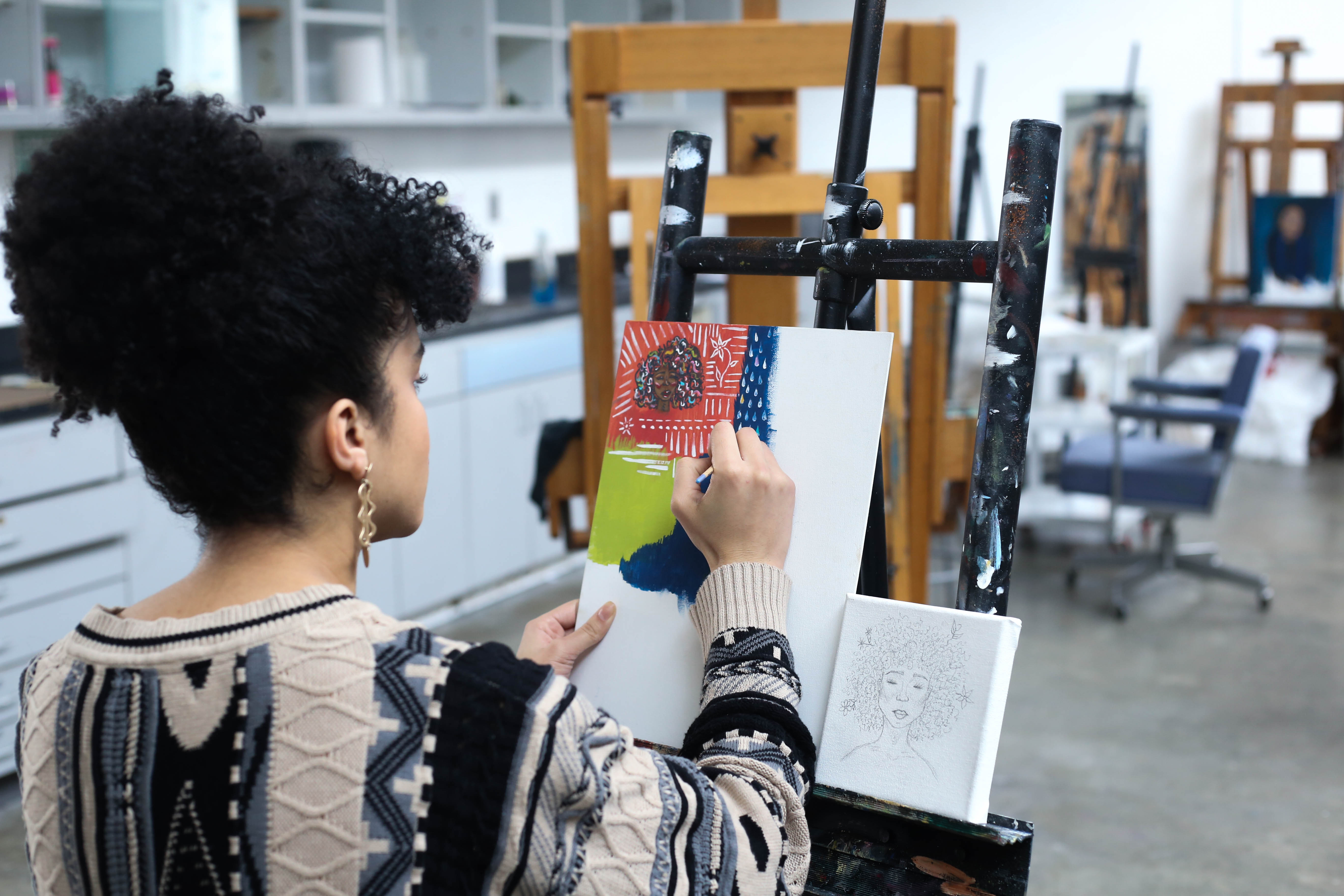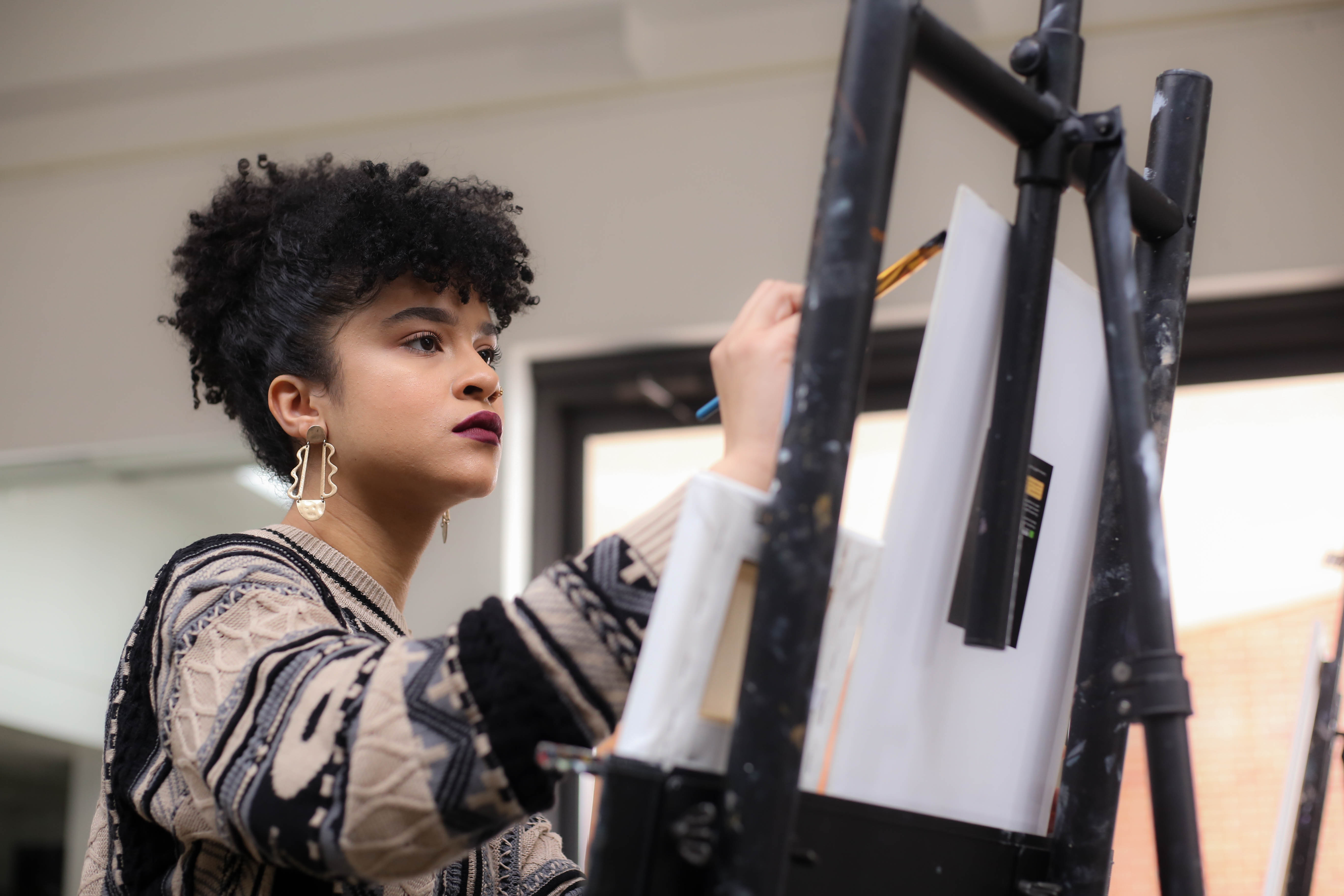Sophea Clarke, a sophomore majoring in biology, uses art as a way to embrace her culture, exercise her creativity and express her emotions.
Sophea Clarke can go months without painting. When she does sit down to create, it’s only after she’s struck with inspiration. Most recently, an Instagram ad for a moon-shaped lamp sparked her creativity. She rarely forces herself to come up with an idea, because she said she likes her work better when the idea comes naturally.
The lack of adequate lighting in her College-in-the-Woods dorm coupled with the soft glow of string lights creates what she describes as a soothing atmosphere. Recently, she’s been vibing to alterative R&B music like FKJ and Noname. She doesn’t have an easel, so she often sits on her bed to paint. Sometimes she paints alone, but other times her roommate joins her.
Overwhelmingly feminine in nature, her “magical realism” work contains images of flowers, butterflies and women like herself — black, with curly hair.
“[Curly hair] looks so beautiful when you paint it in pictures,” she said. “It started off with the curly hair and then I just kept it going. I never make a painting of someone with straight hair.”

The Bronx-based beauty grew up surrounded by the arts. She’s always been a singer, thanks to her father, Philemon, who comes from a big family of singers. Her mother, Marisol, also sings but only in her native tongue of Spanish. Clarke has early memories of her mother drawing portraits on the white paper table covers at restaurants and the two often made trips to Broadway plays and museums. Despite this influence, Clarke didn’t take up painting until she was in high school.
“I saw something on Instagram, you know those Instagram artists and stuff, and they have really nice art,” she said. “I was just like, ‘I feel like I want to paint something, I just want to learn how to do that.’ And then I just did.”
During her junior year of high school, she bought her first set of paints — acrylic, the medium she typically paints in — and a pad of paper. Painted on a ripped piece of paper, her first work shows a girl with flowers tucked into a short afro, with vines around her throat. She said her paintings are influenced by her love for her own curls, a love that, at the time, she had only recently developed.

“I remember the first day [of freshman year] I came with my hair straightened and then, I don’t remember why, but then I washed it,” she said. “I was tired of it. So from then on I just stopped straightening my hair.”
Clarke got her hair straightened for the first time when she was in kindergarten because she wanted to look more like her mom, who is a is a fair-skinned Puerto Rican woman with straight hair and front bangs. Clarke’s thick curls come mainly from her dad’s side; he is a black man from Saint Vincent and the Grenadines in the Caribbean.
“[In middle school,] if people were like, ‘Oh, what are you?’ I’d be like ‘I’m Puerto Rican,’” she said. “I wouldn’t say the Vincentian part because I guess there was some sort of, like, deep fear of identifying as black.
“There were those boys, like middle school boys who would be like, ‘Oh, I don’t want no black girl ’cause she’s like this and that,’ and just saying so much disrespectful stuff. So I guess I internalized that.”

A fair complexion gives Clarke the privilege of being able to pass, a privilege that she said, in hindsight, she wishes she didn’t take advantage of.
“Now I’m just so proud of blackness and it shows in my art and it shows just in everyday life, and I was just much more unhappy before accepting this part of me,” she said. “Trying to reject a part of yourself is never a good thing. You’re just not gonna be as happy as you could be. So now I just feel like it’s been a weight off.”
She said lessons from her father helped her come into her skin. He taught her about her culture and topics like systemic racism.
“When you really think about it, slavery wasn’t that long ago. So when you see certain areas in the city where my father works, like, inner-city areas, he would tell me how slavery actually created the social structure of these areas,” she said. “They don’t talk about that in school.”
Her father, who is a math teacher, also influenced her career plans. Clarke is a biology major and she wants to become a pediatrician.
“The STEM part isn’t really a part of my personality, per se — it’s just my goal,” she said. “[Art] is more of an expressive part that kind of is who I am, whereas STEM is like what I want to do.”
In addition to painting, Clarke also expresses herself through poetry. When she was younger, her mom used to read her poems like Langston Hughes’ “Montage of A Dream Deferred.” Her favorite is “One Hundred Love Sonnets: XVII” by Chilean poet Pablo Neruda.
“I usually write poems when I’m kind of in a bad place,” she said. “My poems are kind of, not usually sad, but more a little on the side. I feel like my [paintings are] definitely more joyful, and then the poems [are] more emotional.”

Clarke sees art as an extension of herself.
“You’ve created something and it’s yours,” she said. “That’s why it’s so hard for me if people ask to buy an original painting that I have. It’s so hard to part ways with it.”
Although Clarke enjoys creating, she doesn’t see herself ever pursuing a full-time career in the arts. She’s afraid that if it’s her job, it’ll take the joy out of it. For now, Clarke is focused on creating work that she’s proud of and makes her happy. Work that depicts the beautiful features of blackness — curly hair, wide noses and big lips — that she’s grown to love.
Photos by Kevin Paredes/Photography Editor



